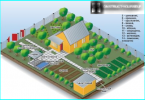
With the onset of winter, when the harvest had been collected long ago, and the plants require more care, gardeners can fully enjoy your vacation in the cozy walls of the house or to devote time to business, which in warm time, never enough time. But as the winter in recent years is characterized by its instability, and replaced by a sudden thaw come severe frosts, experienced gardeners are always willing to take the time to spend the winter working in the garden and to protect green spaces.
The contents
Direct order in the garden and flower beds
Before the onset of frost tender varieties of roses, hibiscus, hydrangeas and other flowering shrubs and young fruit trees were probably carefully wrapped and covered with agrotextile. Now, after the severe weather is not superfluous to check the status of protective structures and, if necessary, correct it.
Examining the trees, special attention should be given to the young shoots, which under the weight of snow may simply break. All foliage remaining in the fall must be removed, and the snow gently down from the branches. Finding a broken branch, damaged area must be immediately gloss over garden pitch.
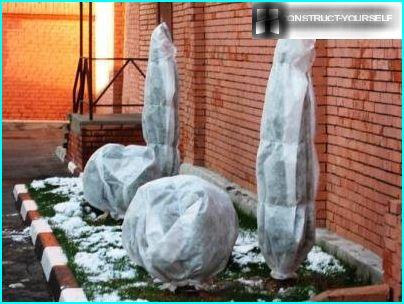
Under the weight of snow cover are broken and some varieties of ephedra. Shelter in a tent will protect the delicate branches of a juniper and arborvitae
The lack of snow, too bad for «winter» plants. The snow protects the root system from frost, and the overhead from the temptations «Wake up». So the snow needs to come from the tracks to the bushes and trees mound, covering not only the Foundation, but also a fork in the skeletal branches of the crown.
Snowless winter can be dangerous for the strawberries. To protect close to the surface the roots of plants, you must cover them with twigs, sawdust or firewood. They will keep blowing snow with strawberry beds.
The winter sun is deceptive: even progreva not at full strength, it can leave burns on tree trunks. Whitewashing will help to protect tree bark from cracking and moresoon. In warm winter days when the temperature never drops below zero degrees, you can even conduct the air discharge and wood cuttings. At this time, whether mowing and repairing hedges.
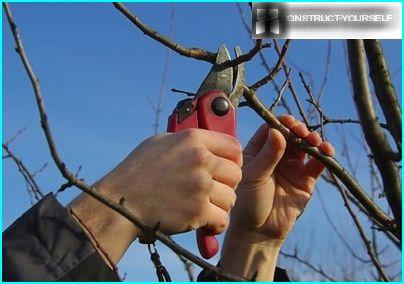
In warm regions this is considered a favorable time for pruning fruit bushes, stone fruit trees and ornamental varieties
The only exceptions are the varieties, flowering on shoots of last year in the spring or early summer. For example: mock orange, forsythia, lilac, clematis — they can be cut only after flowering. Dug in the autumn, rhizomes, and bulbs thermophilic cultures also should be reviewed periodically and ventilate.
Protect plants from rodents and pests
A young garden will need protection from pests. To protect tree trunks from rodents, it is possible, having painted the trunk with a special paint, tar or carbolic acid.
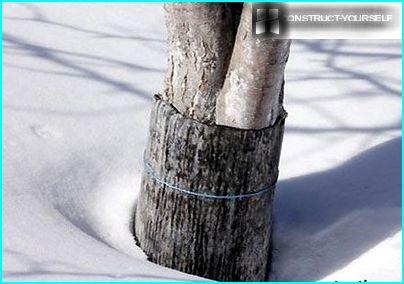
To protect against rodent attacks the trunks of fruit trees can be wrapped with a covering material or a metal grid
If in winter, abundant snow, then additional protection of the bark of trees can be okucu trunks with snow and having compacted it at the base of the trunks.
Effective protection of the bark of trees from mice may be an icy crust. Therefore, in addition to trampling the snow along the borehole of the circle several times to water the land of water. During this period, among the bare branches of the trees it is convenient to identify the winter nests of euproctis chrysorrhoea and aporia Crataegi. Laying eggs Gypsy moth is easier to cut with shears directly with twigs. From the branches of fruit trees should be removed mummified fruit that serve as sources of disease. And to get rid of spores of powdery mildew on gooseberries or currants, enough to sling berry bushes with hot water.
We harvest the seeds we sow
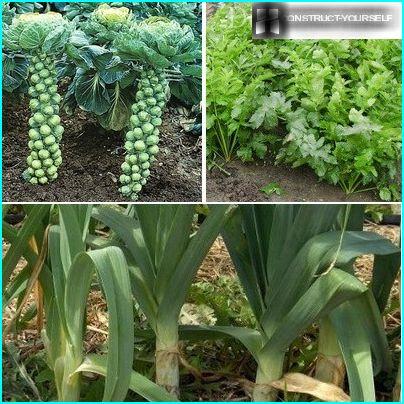
Winter varieties of Brussels sprouts, broccoli, spinach, parsnip, leek and a variety of greenery even in the cold season continue to delight harvest
Optimum conditions for germination of certain colors are cold temperatures of soil and air. Therefore, these annuals, as the poppy, deltoides, marigolds, calendula and lavender can be sown not only in autumn but also in winter.
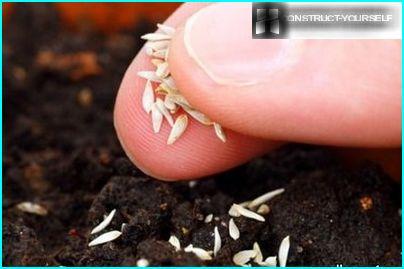
In February, when the threat of a return of severe frosts behind us, you can sow greens and carrots. Even the newly fallen snow they did not hurt
Chores in the garden
Winter is the best time to repair the flower beds and arches, fences and garden furniture. During this period, to engage in the manufacture of props that will be needed in the summer to be installed under branches profusely fruit-bearing trees.
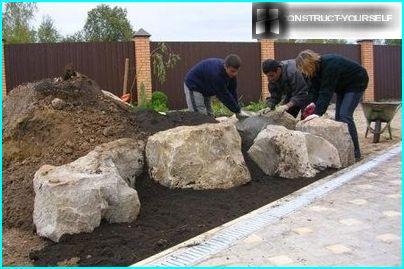
Sunny winter days can be devoted to the arrangement of garden paths, the construction of a rockery or rock garden
If the soil does not freeze in winter, you can even in free days equip of a decorative pond or dry Creek.
Do not forget about the little helpers that destroy pests in the area – feathered friends. Winter for them is a real challenge, because under the layer of snow it is not always possible to find necessary to maintain the vitality food.
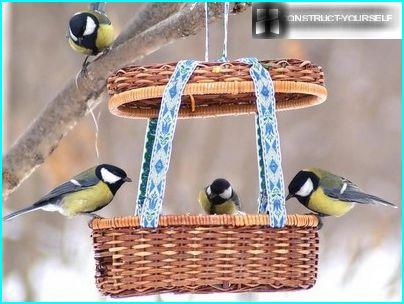
The trough is filled with grains, seeds and pieces of bacon will be a real salvation for birds in winter
And most importantly, winter is the time to make plans to change the landscape design, the implementation of which can begin in the spring.






